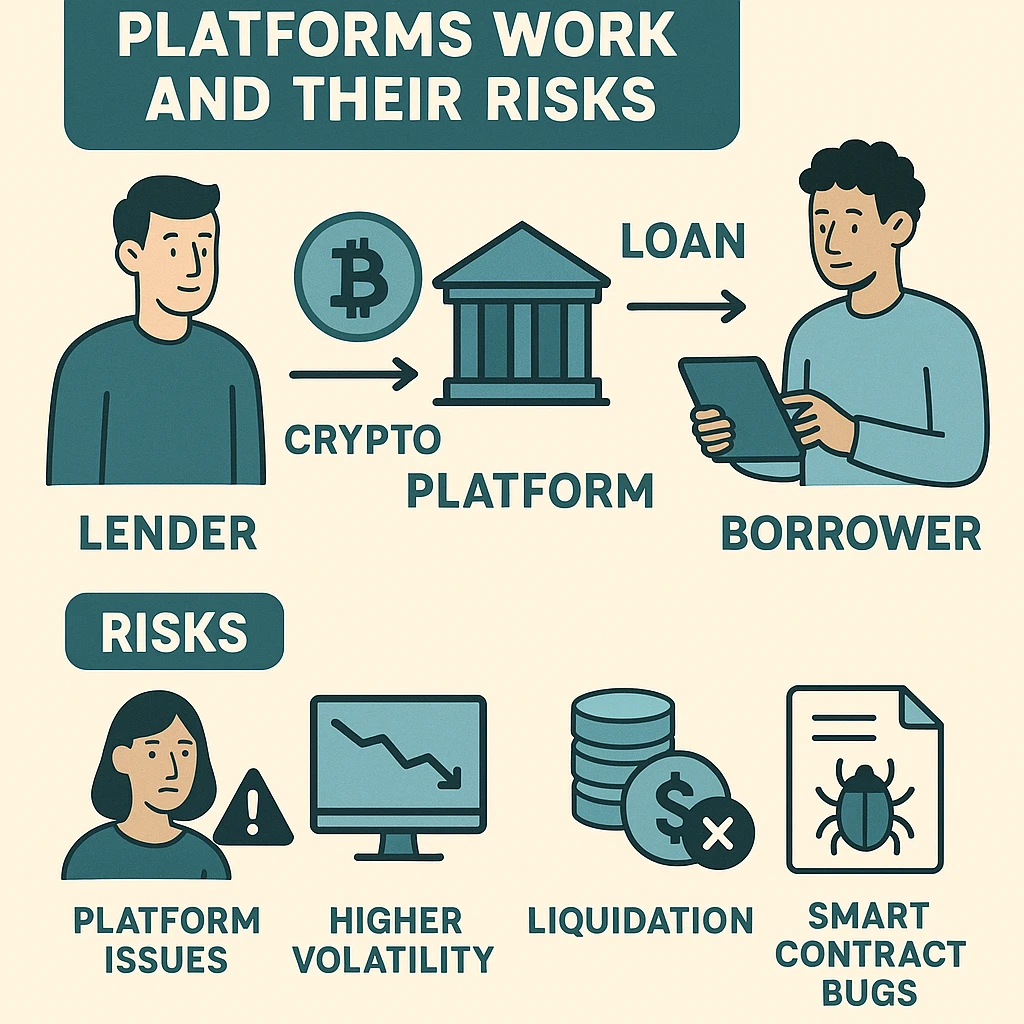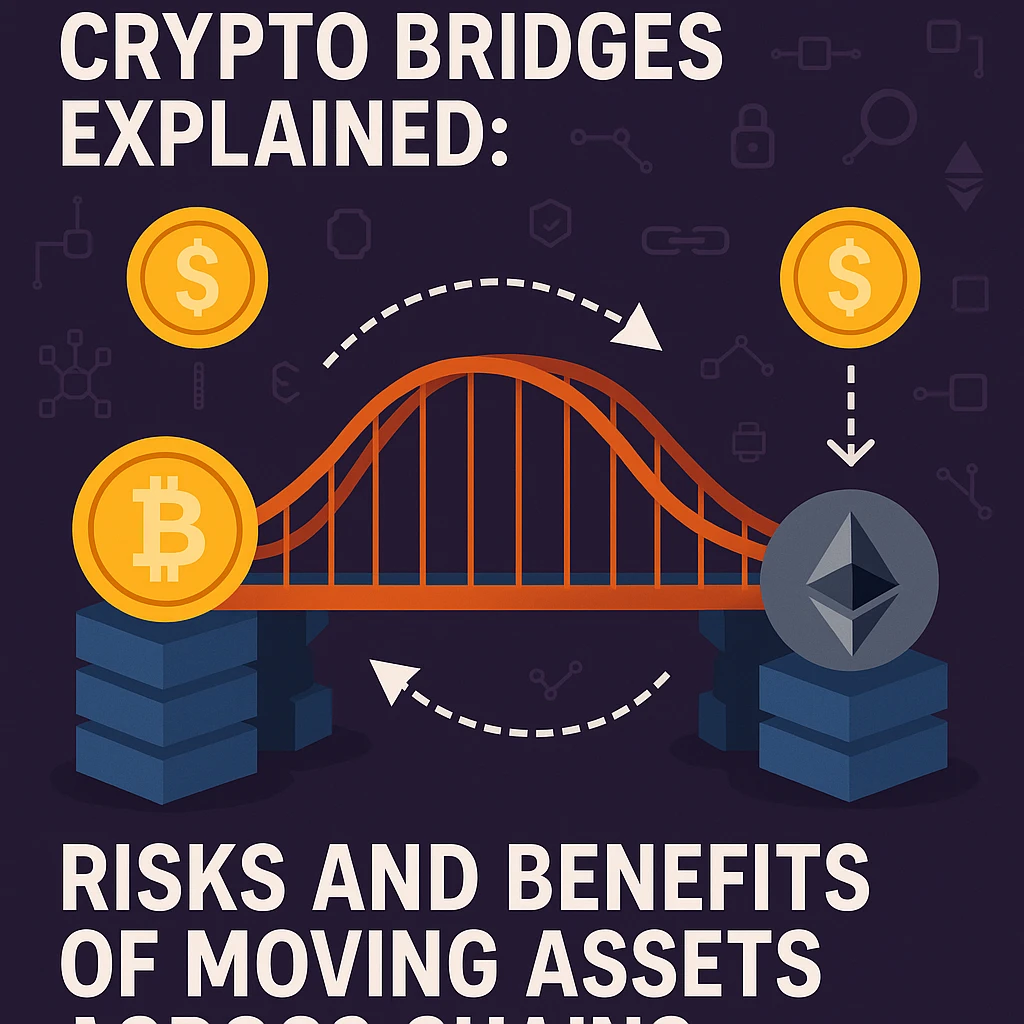The purchase and holding of digital assets is no longer the only aspect of the crypto economy. Crypto lending is one of the most inventive—and contentious—developments in this field. Compared to traditional banking systems, these platforms allow users to lend or borrow cryptocurrency, frequently at competitive rates and with fewer middlemen.
Although the idea is straightforward—lend or borrow money using digital assets—the risks and procedures are intricate and can have serious financial repercussions. Crypto lending is still a combination of risk and opportunity, as evidenced by the 2022 failure of Celsius and Voyager and the ongoing development of DeFi protocols.
We'll explain how cryptocurrency lending platforms operate, their various varieties, their advantages, and—above all—the dangers you should be mindful of before using them in this blog.
What Is Crypto Lending?
Crypto lending enables users to borrow cryptocurrencies by using digital assets as collateral or to lend out their cryptocurrencies in return for interest. It mimics conventional financial lending systems, but blockchain-powered decentralized (or centralized) platforms take the place of banks.
You can participate in crypto lending in two main roles:
-
Lender: A platform receives your cryptocurrency deposit and lends it to borrowers. In exchange, you receive interest, which can range from 10% to 20% per year, depending on the platform and asset.
-
Borrower: You borrow another asset (typically stablecoins or other cryptocurrencies) and deposit cryptocurrency as collateral. This enables you to obtain liquidity without having to liquidate your assets.
How Do Crypto Lending Platforms Work?
1. Depositing Funds (for Lenders)
On a platform, users can deposit cryptocurrencies such as Bitcoin (BTC), Ethereum (ETH), or stablecoins (USDT, USDC). These deposits are combined and made accessible to other users for borrowing.
Interest is paid to lenders according to the token's supply and demand dynamics. For example, because of the demand from traders and arbitrageurs, stablecoins typically offer higher rates.
2. Borrowing Crypto (for Borrowers)
Borrowers select a loan amount and provide overcollateralized digital assets—typically worth more than the loan itself. This is to protect the lender in case the collateral's value drops.
For example:
-
$10,000 in Ethereum may be required as collateral if you wish to borrow $5,000 in USDT (a 50% loan-to-value, or LTV, ratio).
Interest is charged on the borrowed amount, and if the LTV ratio rises (due to collateral value dropping), the platform may liquidate the collateral to protect itself.
Types of Crypto Lending Platforms
1. Centralized Lending Platforms (CeFi)
These platforms operate similarly to banks but in the crypto realm. Examples include:
-
Nexo
-
BlockFi (filed for bankruptcy in 2022)
-
Celsius Network (collapsed in 2022)
-
Crypto.com
Features:
-
User-friendly interfaces
-
KYC (Know Your Customer) requirements
-
Custody of user funds
-
Fixed interest rates
Risks: You entrust your money to the platform, but it lacks transparency. The collapse of Celsius made clear how dangerous CeFi platforms can be when they misuse assets or take on excessive leverage.
2. Decentralized Lending Platforms (DeFi)
These are smart contract-powered protocols that allow peer-to-peer lending without intermediaries. Examples include:
-
Aave
-
Compound
-
MakerDAO
Features:
-
No KYC required
-
Fully automated via smart contracts
-
Transparency through open-source code and blockchain records
-
Variable interest rates
Risks: Extreme volatility, governance attacks, and smart contract bugs can all result in financial loss. Nevertheless, a large number of DeFi protocols have a solid security reputation and are audited.
Benefits of Crypto Lending
1. Passive Income
Lenders earn interest on idle assets, which is especially attractive in low-interest traditional banking environments.
2. Access to Liquidity Without Selling
Borrowers can unlock cash without triggering taxable events or losing exposure to long-term assets.
3. High Yields
Platforms may offer APYs significantly higher than banks—especially on stablecoins, which adds a stable income source to crypto portfolios.
4. Global Accessibility
Anyone with an internet connection and crypto wallet can participate, especially in DeFi lending protocols.
Risks Involved in Crypto Lending
Despite the rewards, crypto lending is not without significant risks:
1. Counterparty Risk (CeFi Platforms)
With centralized platforms, you’re trusting the company to manage funds responsibly. If the platform becomes insolvent, as seen with Celsius, you may never recover your funds.
Example: Celsius used risky tactics to promise high yields, which resulted in enormous losses and a 2022 bankruptcy filing. Numerous users lost access to their deposits.
2. Smart Contract Risk (DeFi Platforms)
DeFi platforms operate on smart contracts. If there’s a bug in the code, it can be exploited by hackers.
Example: The bZx protocol suffered multiple attacks due to smart contract vulnerabilities, resulting in millions in losses.
3. Collateral Liquidation Risk
Overcollateralization is usually required for crypto lending. To safeguard lenders, the system may automatically liquidate your collateral if its value drops below a predetermined level.
Scenario:
You deposit ETH as collateral and borrow USDC. If ETH drops suddenly, your LTV increases. If it passes a set limit, your ETH is sold, possibly at a loss, to repay your loan.
4. Volatility
Crypto assets are notoriously volatile. A sudden market crash can lead to cascading liquidations across multiple lending platforms.
This is especially dangerous in DeFi, where liquidations happen automatically based on price oracles and smart contracts.
5. Regulatory Risk
Crypto lending is receiving a lot of attention from governments. A number of platforms have been targeted by the SEC and other authorities for selling securities that are not registered.
This can lead to:
-
Forced shutdowns
-
Frozen accounts
-
Legal action against users or platform founders
6. Platform Token Risk
Some platforms offer native tokens (like CEL for Celsius or NEXO for Nexo) as part of reward structures. However, these tokens are often volatile and can collapse in value, dragging the platform down with them.
How to Lend or Borrow Safely
To navigate the crypto lending space without getting burned, follow these best practices:
1. Choose Reputable Platforms
Remain on reputable, audited platforms with good user feedback. Seek out protocols in DeFi with sizable Total Value Locked (TVL) and vibrant communities.
2. Understand the Terms
Know the interest rates, repayment periods, LTV ratios, and liquidation thresholds. Don’t just chase high yields—understand how those yields are generated.
3. Diversify Your Exposure
Don’t lend or borrow all your assets on one platform. Spread across different services and limit exposure to any single protocol or token.
4. Monitor Collateral Closely
Use alert systems to monitor your LTV ratio. Be prepared to top up collateral or repay early to avoid liquidation during market downturns.
5. Consider Using Stablecoins
For reduced volatility, lending or borrowing with stablecoins can offer a safer entry into the space—though it’s not risk-free.
The Future of Crypto Lending
Crypto lending is evolving quickly. Several trends are shaping the future:
-
Institutional Involvement: Platforms like Aave Arc are offering compliant solutions for institutions.
-
Insurance Protocols: DeFi platforms like Nexus Mutual are building crypto-native insurance against smart contract failure.
-
Decentralized Credit Scoring: New systems are emerging to allow undercollateralized or credit-based loans in crypto.
However, regulators are watching the space closely. Future innovation will depend on creating models that balance user protection, decentralization, and legal compliance.
Final Thoughts
One of the most exciting and dangerous areas of the decentralized finance movement is represented by cryptocurrency lending platforms. They provide the unbanked with financial services, quick access to liquidity, and high returns, but they also carry a high risk of losing all of your money.
Whether you're a lender looking for passive income or a borrower trying to access liquidity, it’s essential to understand the mechanics and risks involved before committing your funds.
High risk frequently accompanies high rewards in cryptocurrency. Investigate on your own, experiment with small quantities, and keep abreast of platform advancements. In this unstable and rapidly evolving financial landscape, the more informed you are, the better decisions you will make.




Leave a Reply